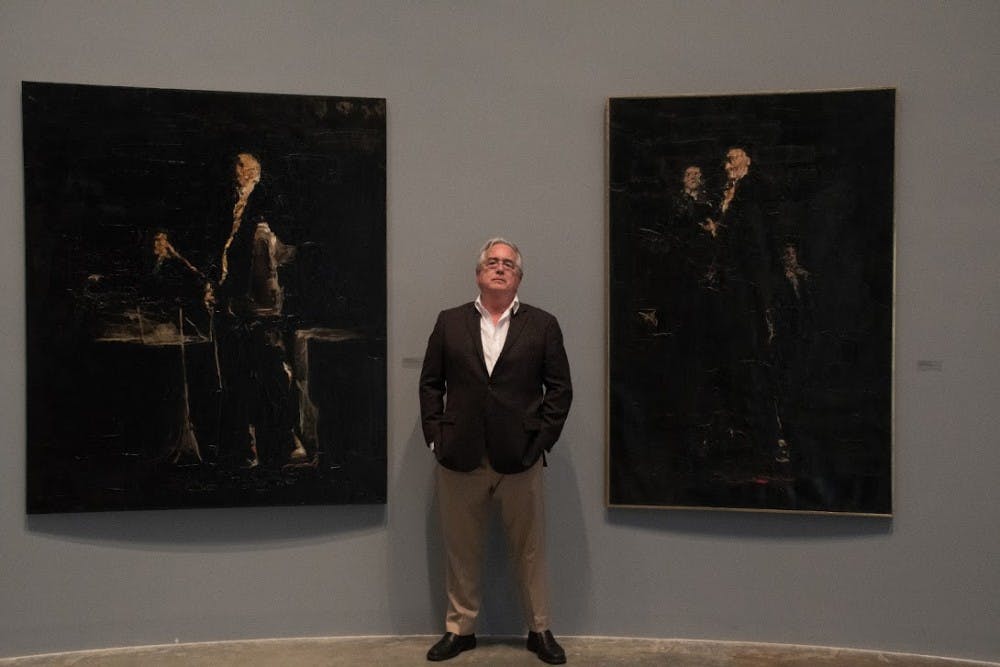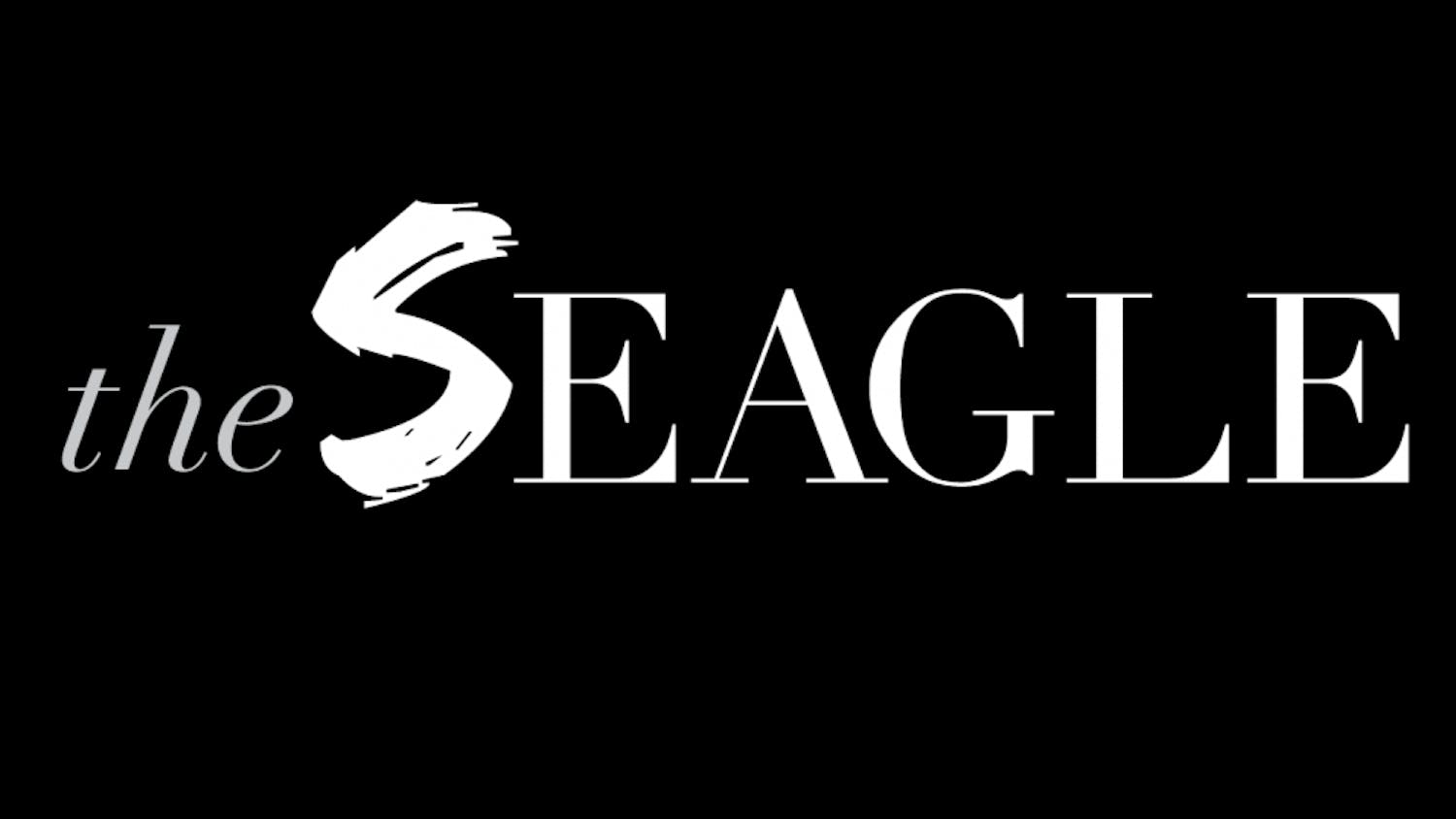Jack Rasmussen is the University’s central figure in the D.C. arts scene, due in large part to his role as the director and curator of the AU Museum at the Katzen Arts Center.
But Rasmussen’s contributions to the University and Washington communities don’t stop there.
From earning two master’s degrees in arts management and anthropology at AU to orchestrating the inner workings of the museum since its foundation almost 15 years ago, Rasmussen set up the museum up to thrive, incorporating art from a variety of genres and countries while making sure to stay relevant amongst its peers in the crowded D.C. museum scene.
Rasmussen said he believes being in D.C. is often a pivotal aspect of his approach to art curation. He said he makes the most of his political setting.
“I'm kind of a political junkie, so I like it,” Rasmussen said. “I think the main thing about Washington is that it's a great city of museums so we have to somehow distinguish ourselves amongst this incredible neighborhood of museums, and doing socially and politically engaged artists is a way of doing that.”
Another way Rasmussen has taken to diversifying the showcases has been through the recent acquisition of over 9,000 works from the Corcoran Gallery of Art.
“The Corcoran museum closed and then we get the lion's share of their collection which is a huge, huge responsibility and opportunity,” he said.
With AU’s standing as the most politically active campus in the country, according to the Princeton Review, there is room for the arts to get involved and do their part, Rasmussen said. He said the museum is pulling its weight to help AU earn such a title.
“I was very happy to see that the University has regained its number one ranking as the most politically involved campus,” Rasmussen said. “I think that's something that we do our part with and it's the fact that we have the freedom to do it.”
Kristi-Anne Shaer, associate director of the AU Museum, knew Rasmussen before she began working at the museum as an AU student taking courses on art curation. For the past five years, Shaer said she has worked closely with Rasmussen to curate the museum and offer up a new perspective.
“As a manager, he really lets you find your way,” Shaer said. “He fosters an environment where we all feel like our opinion matters and we can present new ideas.”
Outside of work, Rasmussen also plays another role: the frontman of “The Artifacts,” a cover band that includes some other familiar faces from the University, including College of Arts and Sciences dean Peter Starr, the AU athletic director Billy Walker and Vice President of Development and Alumni Relations Courtney Surls.
Starr has known Rasmussen since Starr’s arrival at AU in 2009. He believes Rasmussen’s efforts are a vital part of AU’s campus and its arts scene.
“He is, really, a catalyzing force for the museum and he is beloved across this city,” Starr said. “The depth of admiration and respect that people in the Washington art scene have for him is just extraordinary.”
Rasmussen’s attention to detail and care for the museum is the reason he has become such a prominent name in the DMV arts scene, according to Shaer.
“I think that has really made a name for himself in a city full of museums by having such a rigorous exhibition schedule so the exhibitions rotate constantly,” Shaer said. “There's always a reason to come back in here and see something new, but you're going to see something different ─ you're going to see a lot of D.C. artists which many other institutions aren't catering to.”
Rasmussen said his focus for Katzen is in three different areas: political art, local art and international art. He has a great deal planned out for the museum, including potentially adding a print room on the second floor and introducing more of the historic pieces the museum has recently obtain.
Starr believes Rasmussen is the right man for the job, leading the museum and D.C.’s art scene altogether.
“We're really just beginning the next stage of development,” Starr said. “Jack is really the right person to lead us into that next stage.”
Rasmussen sees the AU Museum as not only valuable to the art scene but all students.
“I would hope they would see this as a great resource,” Rasmussen said. “A lot of what we do, I think it's pretty relevant to their lives. They can get something out of it. I think it's innovative and challenging and I would hope that they would get excited by it.”
As for students who aren’t interested in art or have an aversion to it, he believes that the answer is simply exposure. By being open to new experiences, students can get a better grasp of what they do and do not like.
“The main thing with art is you need to be open to what you're experiencing,” Rasmussen said. “I mean it's not as bad as, you know, trying to understand physics. It takes exposure and a certain kind of openness.”
He understands the difficult concepts surrounding modern art but he believes students ought to lean into that notion.
“By definition, contemporary art is going to be something you haven't seen before,” Rasmussen said. ”It's going to not be what you were expecting, so you have to really roll with that. I would hope students will be able to do that.”
This article originally appeared in The Eagle's November 2018 fall print edition.





